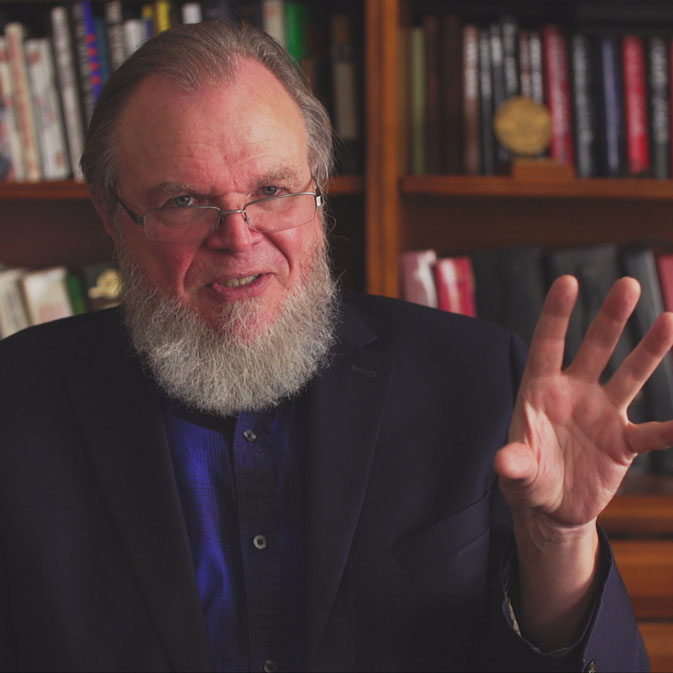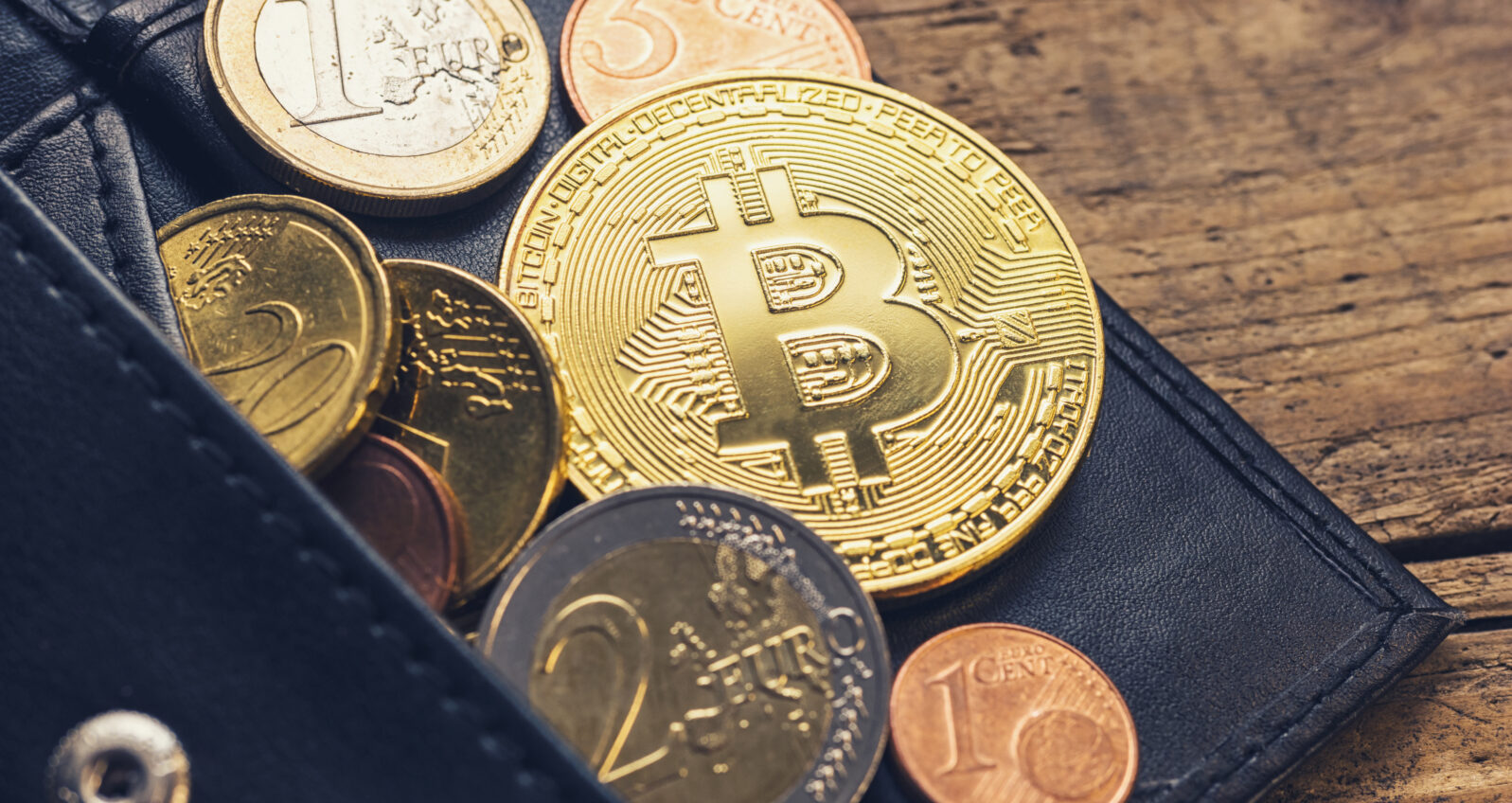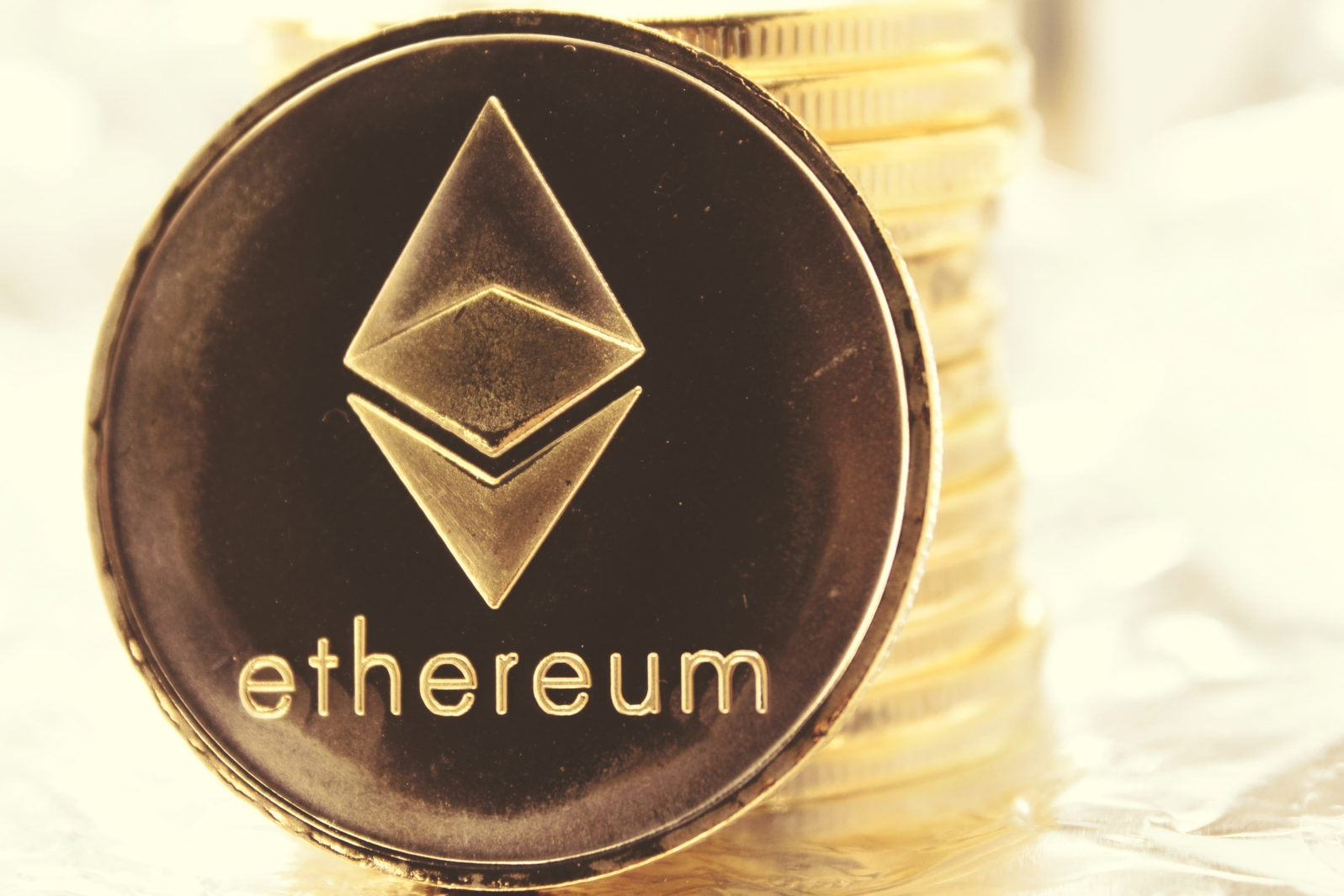Ethereum Moves From Mining to Staking This Month
As there came to be more and more “eth” in the world, the puzzles computers had to solve got very much harder, consuming vast energy resourcesIn this first part of “Staking and Liquidity on Web3”, the fifth episode of the podcast series between computer engineering prof Robert J. Marks and engineers Austin Egbert and Adam Goad, look at upcoming changes in mining — how cryptocurrency is produced. In Episode 4, the discussion centered on what a decentralized crypto financial system would look like and on challenging new concepts like flash loans and smart contracts. Dr. Marks is the director of the Walter Bradley Center.
A partial transcript, notes, and Additional Resources follow.
Robert J. Marks: Like gold, cryptocurrency like Bitcoin and Ethereum is mined, at least so far. Mining becomes harder and harder as more gold is mined… finding fresh gold deposits becomes more and more difficult the more gold you discover.
In the same way as the supply of a cryptocurrency increases, computers have to solve harder and harder problems to be rewarded cryptocurrency. Investment banker, JP Morgan, estimates that the production cost to mine one Bitcoin today is between $13,000 and $24,000. At this recording, one Bitcoin goes for about $20,000. But famously, the price of cryptocurrency like Bitcoin is very volatile. You know where it is today, but you have no idea where it’s going to be tomorrow.
Robert J. Marks: There is a new approach that replaces mining and reduces costs, especially the use of electricity. The new approach is called staking, something that I’ve just learned about thanks to our guests today, Adam Goad and Austin Egbert. Adam, what does it mean to stake your money today?
How staking is replacing mining for Ethereum
Adam Goad: The one everyone is talking about in the news right now [is] Ethereum. Ethereum is moving from proof of work, which is the mining you mentioned, to proof of stake some time in the middle of September 2022. Instead of having all these fancy computers constantly trying to solve cryptographic problems — to have the right to set the next block onto the chain and get the rewards for doing so — what’s going to happen is, people are going to have to stake some Ethereum, I believe the going rate for becoming your own staking validator node is 32 Ethereum.
Robert J. Marks: How much is that in US dollars, 32 Ethereum?
Adam Goad: Well, today one Ethereum is worth about $1,500.
Robert J. Marks: Okay. So we’re talking about $40,000 or so, is that right?

Adam Goad: Yes, but if you don’t have about $40,000 burning a hole in your pocket, you could get together and make a pool of people. You all contribute a little bit to make one of these validators and you have a validator pool then.
Now, instead of everyone racing to solve this problem and using GPUs and dedicated mining machines to the maximum power, now the chain will select one validator for every block. This validator gets to propose the new block to be added to the chain. Then once they have proposed this block, there will be a randomly selected committee that confirms this and makes sure it’s all good and everything. And then once that is done, it is added to the chain. Then everyone else on the chain gets to also confirm the validation in a more passive way. As long as most people agree, 51%, then it won’t be kicked off the chain. And the person who did the validating will get a reward. And I believe also the people on that committee would get a reward as well.
Robert J. Marks: Now let’s talk about validation. You get a validator and they go to the crypto and there’s kind of a committee. This committee has replaced the entire universe, which is trying to mine for something like Bitcoin. So you have a much smaller group, and then you choose the person who takes the place of what the old miner was, right?
Adam Goad: Yes.
Robert J. Marks: And they interact with a blockchain, and the blockchain comes back and… don’t they give them a problem to solve?
Adam Goad: Yes, they do have to solve the cryptography of making sure all the transactions being added are valid, and then added into the rest of the chain.

Robert J. Marks: And then once the problem is solved, all of a sudden, some more crypto is created, right? Just like if you mine something — you solve the Bitcoin problem — you get more crypto, right? The validation gives you more crypto on the blockchain. Is that right?
Adam Goad: Yes. Currently, when you mine a new Ethereum block, you get two Ethereum plus a percentage of the transaction fees for all the transactions in that block.
Robert J. Marks: Okay. So you make about $3,000 by doing that. But you got to put in big bucks to do that. Now the claim is that stakers are approving and verifying transactions on the blockchain and that this process in some way replaces spending all of this time and money that Bitcoin mining requires. How does this work? Where does the money come from? That’s something that I’m having a problem with. How do they make money? Why would I ever want to stake? Why would I want to take my money and stake it?
Adam Goad: When you stake your money and you become one of these validators, you have the chance of being randomly selected to be the one to propose the block, or be on the committee to approve it. So if you are one of those, then you get a portion of the newly created Ethereum that’s added to the chain. Like I said, they get about two Ethereum currently, I have not confirmed if it will be the same on the new blocks, but I imagine there will be some amount. So you get that flat reward, as well as the portion of the transaction fees for the people who you’re putting into that block to be added to the chain.
Robert J. Marks: Okay. So in mining Bitcoin, the investment that you have is in electricity and computer time?
Adam Goad: Yes.
Robert J. Marks: For this new idea of stakers, I guess your investment is the monetary commitment that you make. Is that right?
What if someone is dishonest?
Adam Goad: Exactly. If you somehow make a mistake or you try to lie when you are the one doing this validation, then that money you put up — part of it if not all of it — would be taken away.
Robert J. Marks: Why would somebody want to lie?
Adam Goad: They could say, “Oh yes, everyone sent me all of their Ethereum and now it’s all mine.”
Robert J. Marks: Oh, I see. So they swipe it all. And there a distributed ledger that all of the stakers share?
Adam Goad: Yes, exactly. Just like it is right now, everyone who wants to, can have a copy of the ledger. They can also look at all of the transactions currently in what’s known as the Mempool, the Memory Pool … Well, it is most of the transactions waiting to be added to the chain.
And if these transactions that are put into this new block look funny for some reason, if they don’t pass the cryptographic checks, if they are unable to confirm that they came from the addresses that they’re claiming to come from, then everyone else can say, “Hey, no, that is not a valid block. You did not do a good job proposing this new block.” And reject it and cost you some of your stake.
Proof of work vs. proof of stake
Robert J. Marks: I see. Now, I guess for the old mining, you have to do something called proof of work. With this new idea, you have proof of stake. What’s the difference between the two?
Adam Goad: The proof of your work is that you were able to basically guess the random number that was needed to be the person who gets to add the next block — and it gets progressively harder and harder and harder to guess that random number. With proof of stake, the chain just has to look and say, “Okay, yes, I have record that this person staked their money, that they were willing to be a validator. And now I will let them attempt to validate.”
How do the energy bills compare?
Robert J. Marks: One of the big claims for staking, as I read, is the reduction in the use of electricity. I read online — and it was on the web so it must be true — that Bitcoin, to spend or trade, consumes about 91 terawatt-hours of electricity every year. This is more than used by the entire country of Finland annually, a nation of about five and a half million people. So this is really going to save us a lot, save our electricity bill. And hopefully for those that are into this, maybe help save the planet, right?
Adam Goad: Yes. It’s estimated that, with Ethereum making this transition, it will save greater than 99.9% of the energy that was being used to mine Ethereum.
Robert J. Marks: And we could give all that to Finland and nobody would have to pay an electric bill, if we could figure out how to do that. Okay, now my understanding is that both Bitcoin and Ethereum are, as we record this, are using data mining, but Ethereum is about to make the big switcheroo. Is that right?
Could Bitcoin switch from mining to staking?
Adam Goad: Yes. Bitcoin, the first major cryptocurrency, was not really written to be flexible, so changes to its algorithm can’t be made. But Ethereum is able to be changed as it goes. So yes, in the next few days, sometime between September 10th and September 20th of 2022, Ethereum will be switching over to what is being called Ethereum 2.0. And that is when the proof of stake will take place and mining will end.

Robert J. Marks: Interesting. But Bitcoin, it looks like, will never make that transition. I read that it would take 51% of the Bitcoin owners to make an agreement that they could change the software. I don’t think they’ll ever get 51%. Do you agree?
Adam Goad: That would be possible because 51% is basically the threshold for controlling any of these cryptocurrencies. The way they work is on a consensus. So as long as 51% of all of the nodes, all of the people with copies of the chain, agree that something is the way it is, then it is.
So yes, you could change Bitcoin by having 51% of the people agree to run it differently. But it would be fairly hard to convince people since it does not have quite as much of a centralized organization trying to produce software updates and such, like Ethereum does. And I don’t think there’s much interest currently in changing it broadly.
What can stakers expect to make?
Robert J. Marks: So why would I want to stake my money? Clearly I’m going to get some returns. It struck me as kind of like a savings account. You put money in savings account and then there is a percent return. What percent return can I expect by staking?
Adam Goad: It’s currently estimated that someone staking Ethereum for a proof of stake would make about 2 to maybe even up to 20% back annually.
Robert J. Marks: Whoa. I have some money at a savings account, I think I get a half of 1% annually. It’s just terrible what banking savings accounts pay, so that really sounds good. But you do have to have the big bucks in order to go into staking, right?
Adam Goad: Yes, if you want to be an individual validator, you would need about $40,000 or so, as we discussed, at current rates. But you could join into a pool. You can have 32 people put in one Ethereum, and all of them come together to act as a single validator.
How are validators chosen?
Robert J. Marks: I see.A number of stakers that go into one of these pools and then, in some way, a validator is chosen. What’s the advantage of being a validator and how are they chosen from all of these people that have been participating in these pools of stakers? How is the validator chosen?

Austin Egbert: The question of how the validators are chosen is one that I’ve had a bit of a struggle tracking down on the internet. I’ve been looking into it recently because it’s really been bugging me. Everyone will just say, “Oh, we pick a committee of validators at random to work on the next block in the chain.” And I go, “Yeah, but who’s doing the picking? The picking is happening somewhere. Somebody says okay, you get to be the one who validates this next transaction.” And I’ve eventually tracked it down.
It comes back to the DAOs that Adam had been talking about in previous episodes, those decentralized autonomous organizations. There’s essentially a process by which several different people can contribute randomness towards a final, random answer, and then they all agree on how everyone’s input and contributions will be used to create the final solution. So, as one example, you could have everyone who wants to be a validator, in each round, submit a number. Then they all agree on how they’ll take everyone’s numbers to pick the final batch of validators that should be chosen to work on the network.
Robert J. Marks: Now to be a validator, you have to have some computer skills, as I understand it. Not every Tom, Dick and Harry can be a validator. And so the question is, number one, why would I want to be a validator? And number two, do I have to have these technical capabilities, these coding capabilities, in order to be a validator?
Austin Egbert: I would say you don’t necessarily need to have coding capabilities, but it wouldn’t hurt. Essentially, by being a validator and working on the network and putting up that stake, you’re basically saying, “Hey, I am committing to be a reliable operator of the network.” Where some of that expertise comes in is that you are expected to provide a certain amount of uptime or availability so that if you get chosen to be a validator, you’re actually there to answer the call, essentially.
Austin Egbert: It’s almost, at that point, kind of like jury duty. If you don’t show up for jury duty, the government’s going to come and punish you in some way. In the same way, the network — if you don’t show up to validate — is going to actually diminish some of that stake that you have placed. So while you get rewarded for validating successfully, if you, for some reason, don’t work — for as simple a reason as, oh, maybe your Internet’s out and you can’t be reached — then you’re actually punished for failing to perform the duties you said you would be willing to do. The reason why you might want to go ahead and do this is because you do get those payments when you complete the job successfully.
Here’s the second part of Episode 5: What happens if you want to lend or borrow in crypto? In the world of Web 3.0, the borrower is anonymous, so collateral is a must. Adam Goad tells Robert J. Marks that a number of banks and investment companies are getting into crypto, where their expertise makes them “alpha callers.”
Here are the two parts of the fourth episode:
What would a financial system based on blockchain look like? Adam Goad talks about key differences between banks and blockchains in what creates trust and privacy. Hackers don’t steal cryptocurrency by breaking the encryption but by getting by getting users to reveal information that makes them vulnerable.
and
The futurist finance world of flash loans and hypernodes. In the cryptocurrency world, you could float a loan for ten seconds and make good money — but you and your computer must be very fast indeed. Adam Goad explains to computer science prof Robert J. Marks how decentralized finance works in a world where milliseconds make or break you.
Note: If you want to read or listen to the first three episodes, you will find links to all parts at the bottom of this page.
Additional Resources
- Adam Goad at IEEE Xplore
- Dr. Austin Egbert at IEEE Xplore
- ”Just As Cryptocurrencies Went Mainstream — a Huge Collapse!” by Jonathan Bartlett at Mind Matters News
- Ethereum 2.0
- Tokenomics
